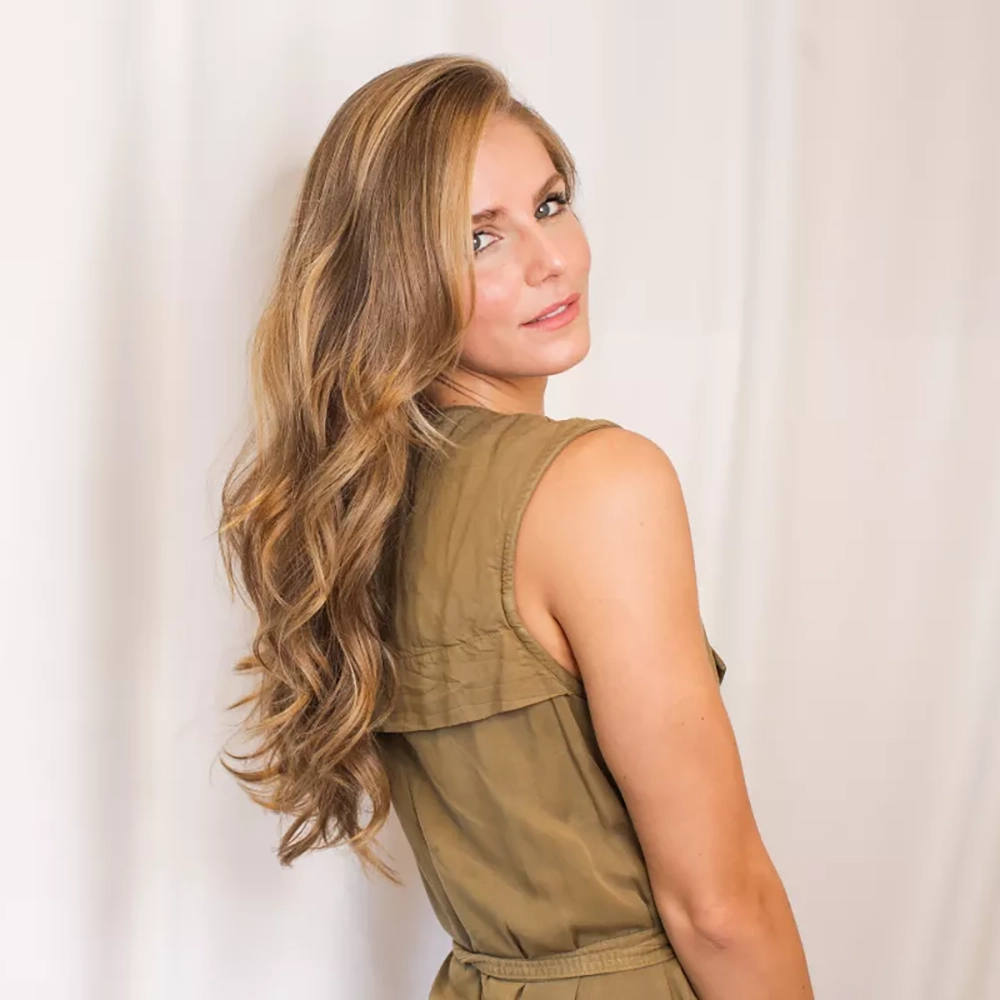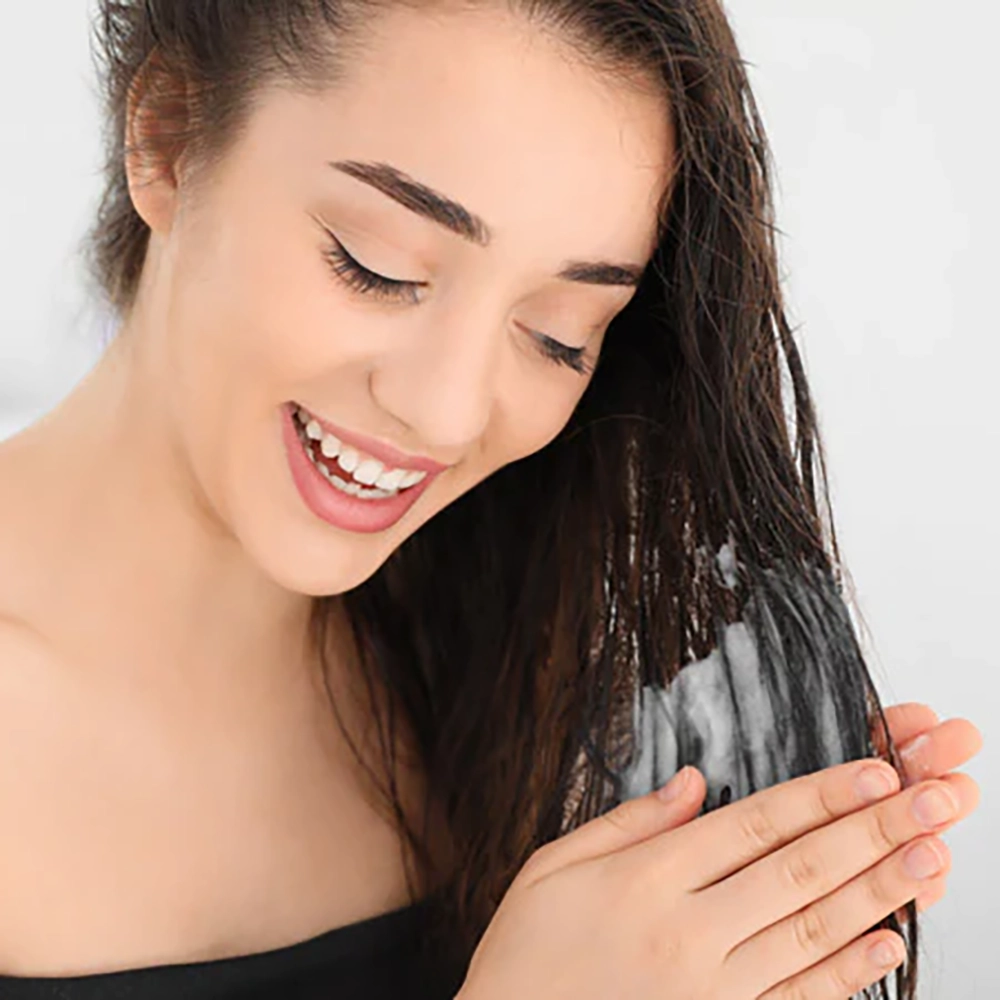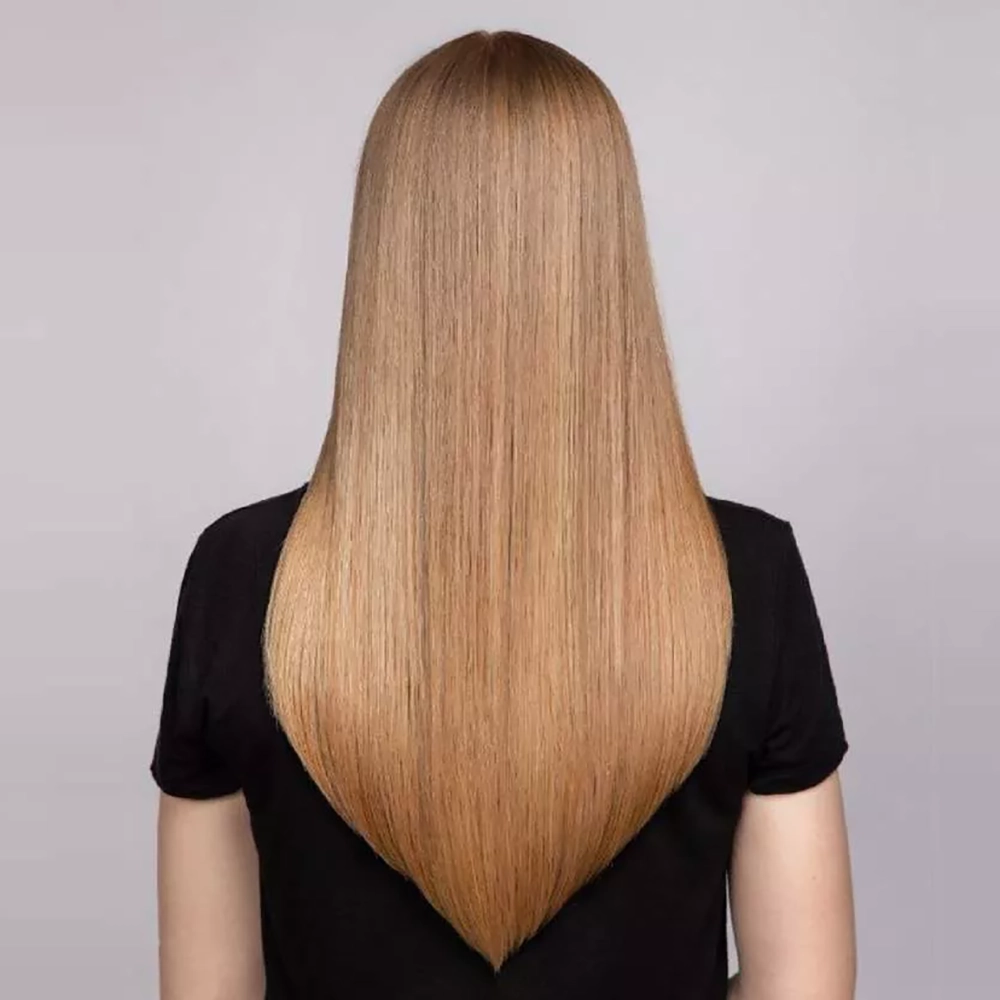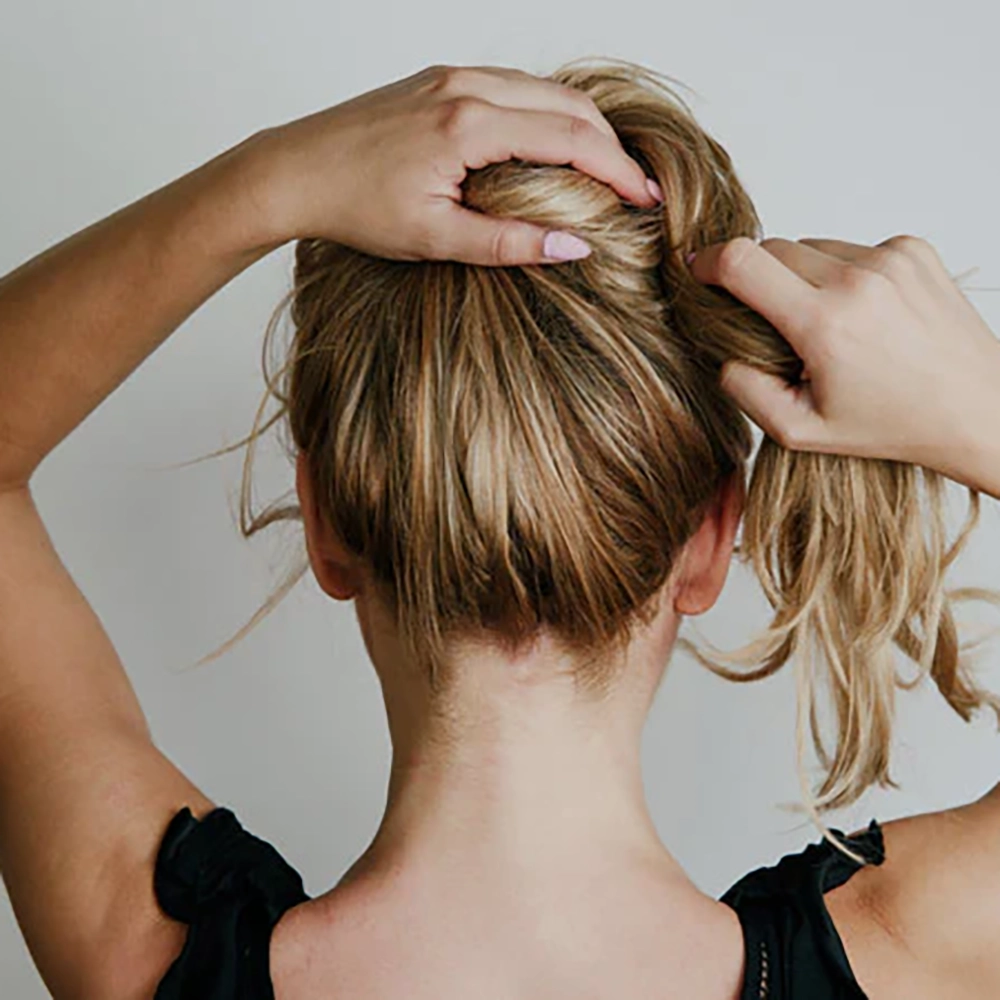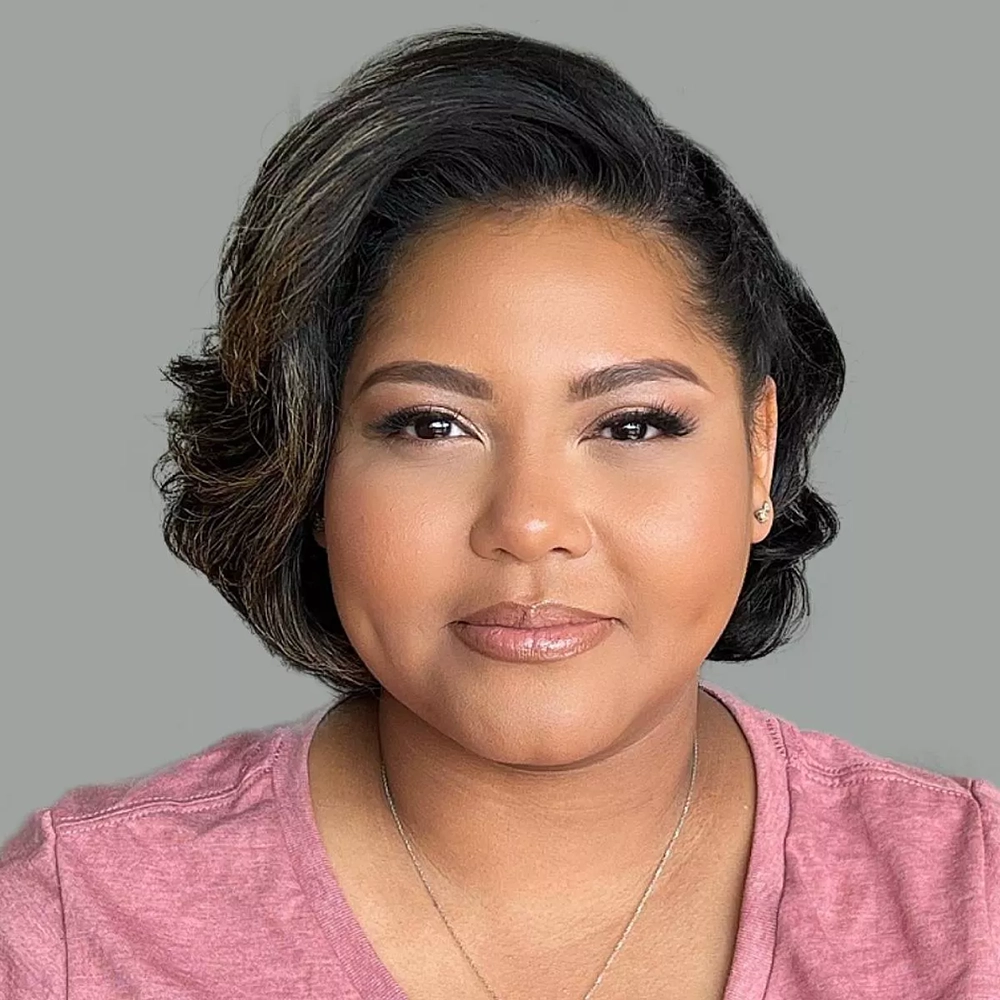Understanding split ends and hair growth
Split ends, also known as trichoptilosis, can be a frustrating and common hair issue that many of us have experienced. They occur when the protective outer layer of the hair cuticle becomes damaged and starts to break apart. This can leave the hair looking frizzy, dry, and overall unhealthy. It is important to understand the causes of split ends and how they can affect hair growth in order to effectively prevent and treat them.
One of the main causes of split ends is excessive heat styling and the use of harsh hair tools. Blow drying, straightening, and curling the hair can strip it of its natural moisture, leaving it dry and prone to breakage. Additionally, using hair tools that are too hot or applying too much heat can cause the hair fibers to become weak and eventually split. It is important to protect the hair from excessive heat by using heat protectant sprays and avoiding the use of hot tools on a daily basis.
Another contributing factor to split ends is improper hair care and maintenance. Using harsh shampoos and conditioners that contain sulfates or alcohol can strip the hair of its natural oils, leading to dryness and breakage. It is crucial to choose hair products that are nourishing and moisturizing, specifically designed to repair and strengthen the hair. Regularly conditioning and deep conditioning the hair can also help to keep it hydrated and prevent split ends.
- Avoid excessive heat styling and use heat protectant sprays
- Choose nourishing and moisturizing hair products
- Regularly condition and deep condition the hair
- Avoid brushing or combing hair when it is wet
- Trim the hair regularly to remove split ends
| Causes of Split Ends | Prevention and Treatment |
|---|---|
| Excessive heat styling | Use heat protectant sprays and avoid daily use of hot tools |
| Improper hair care and maintenance | Choose nourishing products and regularly condition and deep condition the hair |
| Brushing or combing wet hair | Wait for the hair to dry or use a wide-toothed comb |
| Lack of regular trims | Trim the hair every 4-6 weeks to prevent split ends from traveling up the hair shaft |
When it comes to hair growth, split ends can have a negative impact. If left untreated, split ends can cause the hair to break, leading to shorter hair length over time. By regularly trimming the hair to remove split ends, you can promote healthier and faster hair growth. Additionally, maintaining a balanced diet rich in vitamins and nutrients can also contribute to optimal hair health and growth. Consuming foods that are high in protein, vitamins A and E, and omega-3 fatty acids can help nourish the hair from within.
In conclusion, understanding split ends and their impact on hair growth is essential for maintaining healthy and luscious locks. By implementing proper hair care routines, avoiding excessive heat styling, and regularly trimming the hair, you can prevent and treat split ends effectively. Remember, a little extra care and attention can go a long way in promoting optimal hair health and growth.
Importance of a nourishing hair care routine
A nourishing hair care routine is essential for maintaining healthy and beautiful hair. Our hair is exposed to various environmental factors, styling tools, and chemical treatments on a daily basis. Without proper care, our hair can become dull, dry, and prone to damage. By incorporating a nourishing hair care routine into our daily lives, we can keep our hair strong, shiny, and full of life.
One of the key components of a nourishing hair care routine is using the right products. Choosing the right shampoo and conditioner is crucial for the overall health of our hair. Look for products that are specifically formulated for your hair type and concerns. Whether you have dry, oily, or damaged hair, there are products tailored to address your specific needs. Using a shampoo that cleanses without stripping the natural oils of the hair and a conditioner that moisturizes and protects can make a significant difference in the health of your locks.
In addition to using the right products, regular trims play a vital role in maintaining healthy hair. Trimming your hair every 6-8 weeks helps to prevent split ends and breakage. When left untrimmed, split ends can travel up the hair shaft, leading to further damage and hindering hair growth. While it may seem counterintuitive to cut your hair when you want it to grow longer, regularly removing the damaged ends promotes healthier and faster hair growth in the long run.
| Benefits of a Nourishing Hair Care Routine: |
|---|
| 1. Prevents breakage and split ends |
| 2. Enhances hair texture and shine |
| 3. Promotes faster hair growth |
| 4. Protects against heat and styling damage |
| 5. Improves overall hair health |
Maintaining a balanced diet is another crucial aspect of a nourishing hair care routine. Just like the rest of our body, our hair needs proper nutrition to thrive. Consuming a diet rich in vitamins, minerals, and proteins can provide the necessary nutrients for healthy hair growth. Include foods such as eggs, fish, leafy greens, fruits, and nuts in your diet to support strong and lustrous locks.
Lastly, it’s important to protect your hair from heat and styling damage. Excessive heat from styling tools like flat irons, curling irons, and blow dryers can cause dryness and weaken the hair shaft. Always use a heat protectant spray before using heat tools and try to minimize heat styling as much as possible. Additionally, avoid tight hairstyles that pull on the hair and use gentle accessories like hair ties without metal parts to prevent breakage.
In conclusion, a nourishing hair care routine is essential for maintaining healthy and beautiful hair. By choosing the right products, implementing regular trims, maintaining a balanced diet, and protecting our hair from damage, we can achieve strong, shiny, and resilient locks. Remember, consistency is key – make these practices a part of your daily routine and say hello to healthy hair!
Choosing the right shampoo and conditioner
When it comes to maintaining healthy and luscious hair, choosing the right shampoo and conditioner is essential. The products you use can make a significant difference in the overall health and appearance of your hair. With a wide variety of options available on the market, it can be overwhelming to determine which one is best for your specific hair type and needs.
First and foremost, it’s important to understand your hair type before selecting a shampoo and conditioner. Is your hair oily, dry, or somewhere in between? Do you have curly, straight, or textured hair? Knowing your hair type will help you find products that cater to its specific needs.
Next, consider any specific concerns you may have. Are you looking to combat frizz, enhance volume, or repair damaged hair? Different shampoos and conditioners are formulated to target specific issues, so identifying your hair concerns will further narrow down your options.
Once you have a clear understanding of your hair type and concerns, look for products that contain natural and nourishing ingredients. Avoid shampoos and conditioners that contain harsh chemicals, sulfates, and parabens, as these can strip your hair of its natural oils and cause damage in the long run. Instead, opt for products that are infused with ingredients such as argan oil, coconut oil, shea butter, and aloe vera, which provide hydration and nourishment to the hair.
Furthermore, consider investing in a shampoo and conditioner that is specifically formulated for your hair color. Colored hair requires extra care and protection to maintain vibrancy and prevent fading. Look for products that are designed for your specific hair color, whether it be blonde, brunette, red, or highlighted.
Finally, don’t be afraid to experiment and try different brands and formulations until you find the perfect match for your hair. Every individual’s hair is unique, and what works for one person may not necessarily work for another. Pay attention to how your hair responds to different products, and make adjustments as needed.
In conclusion, choosing the right shampoo and conditioner is crucial for maintaining healthy and beautiful hair. Take the time to understand your hair type, concerns, and desired outcomes before selecting products. Look for natural and nourishing ingredients, as well as formulations designed for your specific hair color. Don’t be afraid to experiment and find the perfect match for your hair. With the right shampoo and conditioner, you can achieve the luscious locks you’ve always dreamed of.
Implementing regular trims for healthy hair
Regular trims are an essential part of maintaining healthy hair. Many people think that avoiding haircuts will help their hair grow longer, but in reality, it can actually hinder its growth. Split ends can occur when the hair shaft becomes damaged and begins to fray. If left untreated, split ends can travel up the hair shaft, causing further damage and breakage. By implementing regular trims, you can prevent split ends from occurring and promote healthier hair growth.
One of the main benefits of getting regular trims is that it helps to remove split ends. When you trim your hair, you are essentially cutting off the damaged ends. This prevents the split ends from spreading further up the hair shaft and causing more breakage. By keeping your ends healthy and free from split ends, your hair will appear more voluminous and less prone to breakage.
Another advantage of regular trims is that it helps to maintain the shape and style of your hair. Over time, hair can become uneven and lose its shape, especially if it is not regularly trimmed. By getting regular trims, you can ensure that your hair looks fresh and well-maintained. This is particularly important if you have a specific hairstyle or haircut that you want to preserve.
- Prevents split ends from spreading
- Keeps hair looking fresh and well-maintained
- Promotes healthier hair growth
| Benefits of Regular Trims: |
|---|
| Prevents split ends from spreading |
| Keeps hair looking fresh and well-maintained |
| Promotes healthier hair growth |
Implementing regular trims into your hair care routine is crucial for achieving and maintaining healthy hair. It is recommended to get a trim every 6-8 weeks, depending on your hair type and desired length. This will help to prevent split ends from occurring and promote optimal hair growth. So, don’t be afraid to book that salon appointment or pick up those hair cutting shears and take care of your hair by giving it the regular trims it deserves!
Exploring natural hair masks for split end prevention
Natural hair masks are an effective and affordable way to prevent split ends and promote healthy hair growth. Split ends occur when the hair shaft splits into two or more parts, causing the hair to become fragile and prone to breakage. By using natural ingredients, you can provide your hair with the nourishment it needs to remain strong and resilient.
One popular natural hair mask for split end prevention is the honey and avocado mask. Avocado is rich in vitamins and healthy fats that moisturize the hair, while honey acts as a humectant, attracting and locking in moisture. To create this mask, mash half an avocado and mix it with two tablespoons of honey. Apply the mixture to your hair, focusing on the ends, and leave it on for 30 minutes before rinsing thoroughly.
Another effective natural hair mask for split end prevention is the egg and olive oil mask. Eggs are packed with proteins that strengthen the hair follicles, while olive oil provides deep hydration and nourishment. To make this mask, beat one egg and mix it with two tablespoons of olive oil. Apply the mixture to your hair, covering the ends, and leave it on for 20 minutes before rinsing with cool water.
In addition to these natural hair masks, it is important to maintain a regular hair care routine. This includes shampooing and conditioning your hair with products that are suitable for your hair type. Choosing the right shampoo and conditioner is essential in maintaining the health of your hair. Look for products that are free from sulfates and harsh chemicals, as these can strip the hair of its natural oils and cause further damage.
- When applying a hair mask, it is important to massage it into your scalp to stimulate blood circulation and encourage hair growth.
- Avoid using hot water when rinsing your hair, as this can strip the hair of its natural oils and cause further damage.
- Implementing regular trims every 6-8 weeks is also crucial in preventing split ends. Trimming removes the damaged ends, allowing the hair to grow healthier and stronger.
| Hair Mask Ingredients | Benefits |
|---|---|
| Honey and Avocado | Moisturizes and locks in moisture |
| Egg and Olive Oil | Strengthens and nourishes the hair follicles |
To protect your hair from heat and styling damage, it is important to use heat protectant sprays or creams before using heat styling tools. These products create a barrier between the heat and your hair, minimizing the damage caused by high temperatures. Additionally, limit the use of heat styling tools and opt for heat-free alternatives whenever possible.
Lastly, maintaining a balanced diet is essential for optimal hair health. A nourishing hair care routine should be complemented by a diet rich in vitamins and minerals. Include foods such as leafy greens, fruits, lean proteins, and omega-3 fatty acids in your diet to promote healthy hair growth and prevent split ends.
Protecting your hair from heat and styling damage
Protecting Your Hair from Heat and Styling Damage
Heat styling tools such as flat irons, curling irons, and blow dryers have become essential to many people’s daily hair routines. While these tools can help us achieve the desired look, they can also cause significant damage to our hair if not used correctly or if used excessively. Heat and styling damage can lead to dryness, breakage, and split ends, which can be frustrating and detrimental to our hair health. Fortunately, there are several measures we can take to protect our hair from heat and styling damage.
1. Use a Heat Protectant: Before using any heat styling tools, it is crucial to apply a heat protectant product to your hair. A heat protectant creates a barrier between your hair and the heat, reducing the potential damage. Look for a heat protectant spray or serum that suits your hair type and apply it evenly throughout your hair. This extra layer of protection will help minimize the damage caused by excessive heat.
2. Adjust the Heat Settings: Most heat styling tools come with adjustable heat settings. It is vital to use the appropriate heat setting for your hair type. Fine or thin hair generally requires lower heat settings, while thicker or coarser hair can tolerate higher temperatures. By using the right heat setting, you can prevent unnecessary damage and still achieve the desired hairstyle.
3. Limit Heat Usage: While it may be tempting to style our hair with heat every day, it is essential to give our hair regular breaks from heat styling. Try incorporating heat-free hairstyles into your routine, such as braids, buns, or natural waves. This allows your hair to recover and reduces the risk of long-term damage. By limiting heat usage to special occasions or when necessary, you can maintain healthier and more resilient hair.
4. Opt for Heatless Styling Methods: There are various heatless styling methods available that can help you achieve the look you desire without exposing your hair to heat. Some popular alternatives include flexi rods, foam rollers, and air drying techniques. These methods are not only gentler on your hair but also add versatility to your styling routine.
| Benefits of Protecting Your Hair from Heat and Styling Damage |
|---|
| 1. Reduces breakage and split ends, promoting overall hair health. |
| 2. Preserves the natural moisture and shine of your hair. |
| 3. Extends the lifespan of your hair, reducing the need for frequent trims. |
| 4. Allows for greater flexibility in your styling options with minimal damage. |
| 5. Improves the manageability and texture of your hair. |
By following these protective measures and incorporating heatless styling methods into our hair care routines, we can minimize the damage caused by heat and styling tools. Taking care of our hair not only helps us maintain its health and vitality but also allows us to experiment with different hairstyles without worrying about long-term damage. Remember, prevention is always better than repair when it comes to protecting our hair from heat and styling damage.
Maintaining a balanced diet for optimal hair health
A balanced diet plays a crucial role in maintaining optimal hair health. Just like the rest of our body, our hair requires a variety of nutrients to grow, stay strong, and look its best. By including a range of vitamins, minerals, and other essential nutrients in our diet, we can support hair growth, prevent hair loss, and promote overall hair health.
One of the key nutrients for healthy hair is protein. Hair strands are composed of a protein called keratin, so it’s important to consume enough protein-rich foods like lean meats, eggs, fish, beans, and dairy products. Vitamin A is also essential for hair health as it helps in the production of sebum, which keeps the scalp moisturized. Foods rich in vitamin A include carrots, sweet potatoes, spinach, and kale.
Omega-3 fatty acids are another valuable component of a balanced diet for hair health. These healthy fats can be found in fatty fish like salmon, sardines, and mackerel, as well as in walnuts, chia seeds, and flaxseeds. Omega-3 fatty acids help to nourish the hair follicles and promote a healthy scalp.
- Vitamin C, commonly found in fruits such as oranges, strawberries, and kiwis, is essential for collagen production. Collagen is an important structural protein that strengthens the hair strands.
- Iron is necessary for proper hair growth and prevents hair loss. Foods rich in iron include spinach, lentils, beef, and tofu.
- Zinc helps in repairing damaged hair tissues and promoting hair growth. It can be found in foods like oysters, pumpkin seeds, and beef.
Biotin, also known as vitamin B7, is often associated with hair growth and is commonly found in foods like eggs, almonds, and sweet potatoes. It helps in the production of keratin, the protein that forms the structure of the hair.
| Nutrient | Food Sources |
|---|---|
| Protein | Lean meats, eggs, fish, beans, dairy products |
| Vitamin A | Carrots, sweet potatoes, spinach, kale |
| Omega-3 fatty acids | Fatty fish, walnuts, chia seeds, flaxseeds |
| Vitamin C | Oranges, strawberries, kiwis |
| Iron | Spinach, lentils, beef, tofu |
| Zinc | Oysters, pumpkin seeds, beef |
In addition to incorporating these nutrients into your diet, it’s also important to stay hydrated by drinking plenty of water. Dehydration can cause dry and brittle hair, so make sure to drink enough water throughout the day. Furthermore, minimizing the intake of processed foods, sugary snacks, and excessive caffeine can also contribute to healthier hair.
A balanced diet not only benefits your overall health but also provides the necessary nutrients for optimal hair growth and vitality. By including a variety of nutrient-rich foods in your diet, you can support your hair’s health from the inside out and enjoy stronger, shinier, and more beautiful hair.



